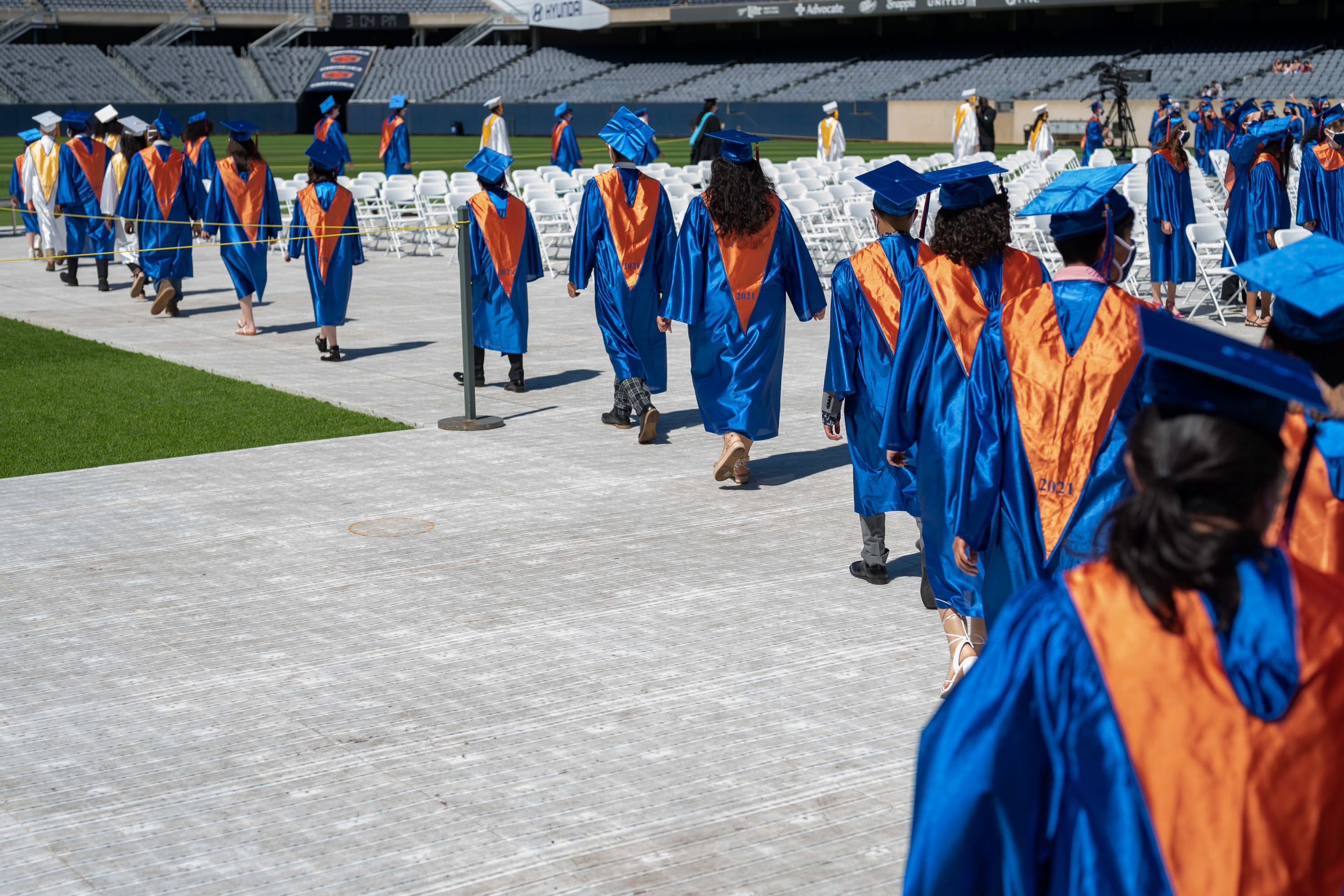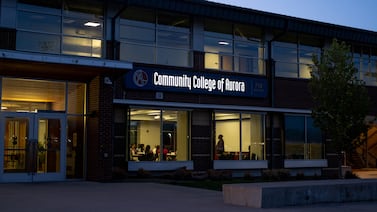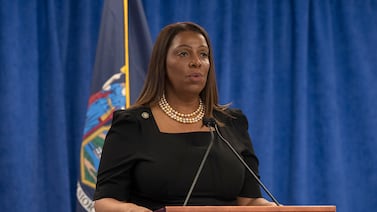Even as more Chicago students go to college, the neighborhood where they live — not just the high school they attend — has a major impact on whether they ultimately attain a degree.
New research from the University of Chicago’s To&Through Project shows that community areas have a significant impact on educational attainment outcomes — findings that researchers say underscore the need for deeper investments in housing security, health care access, and transportation to address the barriers facing Chicago students.
Researchers examined community areas to see whether boosting school choice was enough to improve educational attainment. By analyzing high school enrollment and college graduation data by where students live, as well as where they go to school, the report notes, researchers could “more clearly see the consequential impacts that the legacy and current reality of racial segregation has had on students’ educational experiences throughout Chicago.”
School choice can improve a student’s chance of getting into college, but they found “where students live deeply shapes their likelihood of obtaining a certificate or college diploma.”
Dominique McKoy, study author and associate director of engagement for the To&Through Project, said the study, accompanied by a new data tool launched Thursday, focuses on Chicago’s community areas, the 77 geographic areas that make up the city, rather than just focusing on high schools as a lens to look at educational attainment.
In compiling data, researchers found some community areas still have a centralized high school that the majority of students attend, while other community areas are home to students who may be dispersed among more than 40 different high schools across the city, McKoy said.
The dispersion of students outside of their community high school is particularly pronounced in predominantly Black neighborhoods, McKoy said.
Over the last two decades, Chicago Public Schools has expanded school choice, which has resulted, in some instances, in more than 75% of students leaving their neighborhood to attend schools outside their communities areas.
This data “provides us an opportunity to better understand how school choice is being exercised throughout community areas,” McKoy said.
While high school contributes to shaping student’s lives, a student’s community area plays a large role in whether they complete a college degree, said Jenny Nagaoka, study author and deputy director of the UChicago Consortium on School Research.
“We all already know the rates of high school graduation vary widely by high school,” Nagaoka said. “But when you organize the same students by the community area where they live, the high school graduation rates start to look pretty similar across all the community areas in the city.”
Across the city, more than 70% of CPS students are graduating from high school compared with graduation rates below 50% nearly two decades ago, Nagaoka said. The citywide five-year graduation rate is 83.8% in 2021.
The researchers found similar patterns for college enrollment, too.
“When we look at college enrollment rates by community area, they’re pretty similar across the city,” Nagaoka said. “In almost every single community area in the city, high school graduates are going to college at rates at 50% or higher.”
But after high school, a community area may influence whether a student attains a degree. This could be attributed to levels of support and resources that vary based on community area, researchers said.
“Changing the educational trajectories of Chicago’s young people also requires institutions and organizations across sectors to address other deep-seated inequities through investment in the communities in which students live,” McKoy said.
Rather than perpetuate stereotypes of community areas, McKoy and Nagaoka hope this data tool sparks local conversations to better understand how student experiences both “inside and outside CPS classrooms” impact educational outcomes.
Greater investment in students’ college graduation could have huge implications for intergenerational change inside communities, Nagaoka said.
“If a community area has more students graduating from high school, going to college, and graduating college,” Nagaoka said, “that has the potential impact of really changing what is happening inside of community areas and provides human capital for the future.”
Among the report’s other findings:
- In about one-third of Chicago’s community areas such as in North Lawndale and West Garfield Park on the city’s West Side and Riverdale on the city’s far South Side, less than 25% of ninth grade students are projected to complete a college credential within 10 years if current attainment rates do not change, compared to more than 50% in five community areas including Armour Square on the South Side, and Lincoln Park and Lakeview on the North Side.
- About 16% of high schools had college enrollment rates below 50% (21 out of 124), and four had rates below 40% (according to CPS data, many of the city’s alternative schools also have enrollment rates well below 40%). At the other end of the spectrum, in four high schools, more than 90% of graduates made an immediate transition to a two-year or four-year college.
- Out of the city’s 77 community areas, 15 neighborhoods showed the most commonly-attended schools were charter schools, but all of them enrolled 20% or fewer of the CPS ninth-graders living in the community area.






